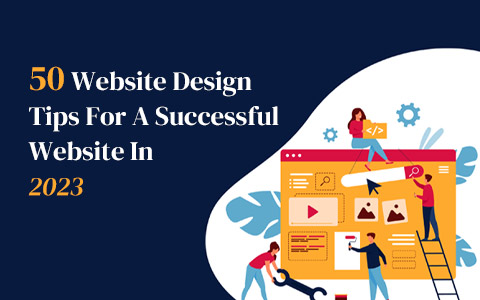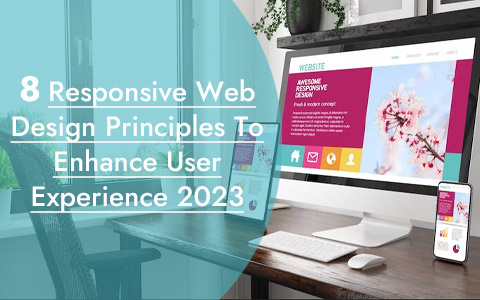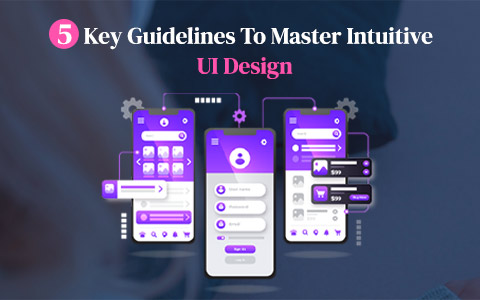8 Techniques to Minimize Cognitive Overload in Website Design
“Design is the silent ambassador of your brand.” – Paul Rand
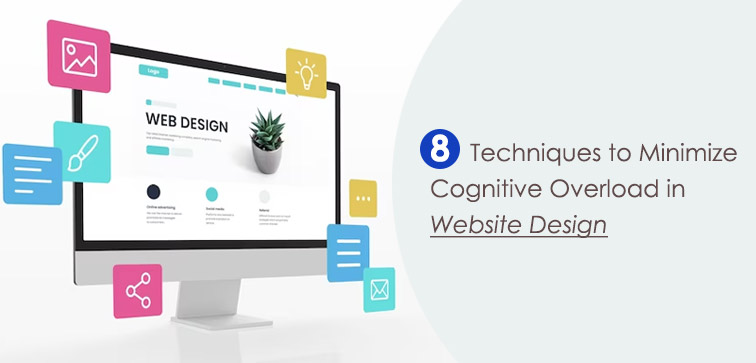
What Is Cognitive Overload?
Cognitive overload in terms of the site is inundating your users with an excessive amount of information, which hinders their ability to process the information efficiently and effectively. This can cause a decline in user engagement as the user faces confusion and frustration while trying to go through the site.
When designing your site it is better to be aware of these issues which can occur if not taken into consideration in the planning phase of the design. You don’t want to compromise the user experience of your site by bombarding users with a lot of information that can affect user interaction and engagement with the site.
If you fail to mitigate the problem of cognitive overload on your site, you will end up with lower conversion rates, lessened customer satisfaction, poor choice making (by the user when purchasing on your site), and finally, increased frustration (as the user wouldn’t get the best experience buying from your business or interacting with your site).
Midas is a trusted name in the field of website design and development. We are an ISO German certified company and you can reach out to us for the latest Web Development Services and web designing services. Call now for consultation and professional guidance.
8 Key Approaches To Minimize Cognitive Overload In Site Design:
1. Clear Directions And User Experience:
Website designing when done right can yield winning results for your business and customers simultaneously.
It is essential to focus on user experience and the ways you can simplify their journey through the site without causing or triggering the cognitive overload.
Clear, direct, and succinct instructions can come in handy in creating a positive experience for the user on your site. It helps in preventing distraction and motivates users to swiftly complete the task without getting lost in the information.
One way to achieve clarity in directions is by employing straightforward yet impactful visuals and layouts, establishing logical navigation pathways, and ensuring the visibility of essential information.
Visual cues can also be harnessed to convey instructions, thus effectively reducing the volume of textual content users must digest. This strategic approach not only enhances task focus but also minimizes the likelihood of errors.
By reducing mental strain, concise instructions facilitate expeditious task completion, contributing to a smoother and more efficient user experience.
2. Leverage Established Norms & Contemporary Approaches:
Harness and balance the established norms as well as the current trends in the site design niche to create better and brand relevant website designs.
This also prevents cognitive overload as it provides users with a familiar framework to navigate. For example, during the development phase, a designer may opt for well-recognized design elements such as grid layouts, color schemes, or typefaces.
By implementing elements that a user is already accustomed to simplifies the site navigation for them.
By embracing time-tested and reliable design norms and incorporating contemporary design principles, you create a design that lessens the cognitive load on users and enables them to focus on the content without the distraction.
Notably, commonly recognized elements such as “search” and “sign in” icons are prime examples of graphics frequently employed in web design to enhance user comprehension and reduce mental strain.
3. Highlight Clickable Links:
We’ve all encountered the frustration of inadvertently clicking on something that wasn’t a clickable link, leading to unnecessary mental exertion.
To mitigate this issue, websites can employ distinct color cues to highlight clickable URLs and differentiate between visited and unvisited links.
A prominent example of this approach is employed by Google, which uses the color purple to signify links that a user has previously visited and blue for unvisited links. This visual distinction aids users in swiftly pinpointing the information they seek.
By implementing this technique, websites can facilitate more efficient navigation, reducing cognitive strain for users. The practice of color-coding links based on their activity not only streamlines the user experience but also enables users to quickly identify previously visited sites, further enhancing their overall browsing experience.
4. Simplifying Complex Challenges By Task Segmentation:
Complex problems can overwhelm users, but breaking them down into manageable steps reduces cognitive overload.
Much like assembling a jigsaw puzzle piece by piece or learning a new language step by step; dividing complex tasks simplifies the mental workload, making it more manageable and less stressful for users.
5. Streamlined Navigation & Site Design:
Unnecessary steps in a user’s journey can escalate cognitive load and hinder the seamless flow of interaction.
Simplifying navigation options by organizing content into straightforward categories ensures that users can swiftly access the information they seek, minimizing cognitive strain and enhancing the user experience.
For instance, a streamlined navigation bar featuring concise choices such as “Home,” “About Us,” “Products,” “Services,” and “Contact Us” exemplifies how simplicity can enhance user interactions.
6. Balanced Design Elements & Site Design:
You should be aware that excessive use of a single content type or an abundance of design elements can contribute to cognitive overload, making it challenging for users to consume the information.
One effective strategy to mitigate this overload is the strategic incorporation of icons in lieu of extensive textual instructions or options.
Icons recognized universally as symbolic representations, occupy less screen real estate and are more readily comprehensible.
This approach fosters harmony and equilibrium among diverse content elements such as images, videos, text, infographics, and icons.
7. Optimize Loading Speed:
One critical factor that can significantly impact user satisfaction is a website’s loading speed. Extensive loading times can present a substantial issue, as it increases the chances of the user abandoning the page.
Research indicates that as many as 40% of users will abandon a website if it takes more than three seconds to load. To mitigate cognitive strain and ensure users can promptly access the information, it is imperative to construct a website with quick loading speeds.
A well-executed user interface, straightforward navigation, relevant content, and a swiftly loading website; all these factors together can minimize the cognitive overload and improve usability.
8. User-Centric Design:
The final factor and key concept to understand when creating site design that prevents cognitive overload is to understand the user intent and optimize and refine the design to improve the user experience you deliver through your site.
For instance, in the case of an eCommerce platform/site, it is important to establish a clear, user-centric path that empowers customers to efficiently and swiftly fulfill their requirements.
Designing with a single-minded focus on each page reduces cognitive load by guiding users toward their objectives efficiently.
Ongoing follow-ups, user feedback collection, and behavioral analysis enable continuous improvements, ensuring a user-friendly and easy-to-navigate design that minimizes cognitive overload
Conclusion:
Your business website has the potential to bring in more business and attract potential customers. It is thus essential to be very strategic and aware of your choices and investments in terms of website design and development.
If you are looking for professional assistance for web development and designing services from India, You Can Give Us A Call Right Away! Midas is your technology partner for start-to-end solutions for site design as well as maintenance. Stay tuned for our next update and check out the services section for further details.
popular post
-
16 Features That All Best Performing E-Com Mobile Apps Have
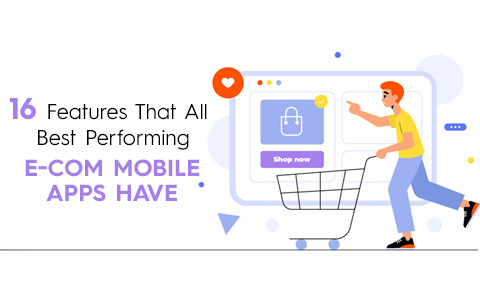
-
10 UX Statistics You Must Know Before Investing In UX In 2023

-
Must-Have Travel App Features That Can Boost Your Travel Sales

Categories
- Internet Marketing (13)
- Software Development (8)
- Mobile Apps Development (44)
- Web Designing (32)
- Web Development (60)
 business@midaswebtech.com
business@midaswebtech.com October 27, 2023
October 27, 2023
